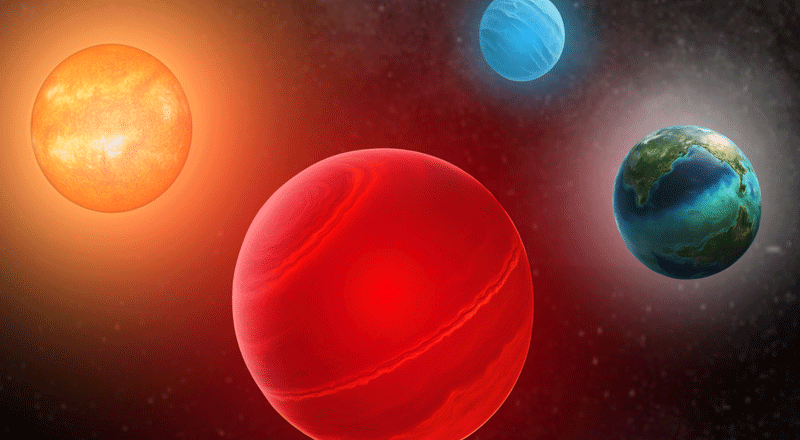A Breakthrough in Space Exploration
Scientists have made a groundbreaking discovery in deep space—two massive objects that defy conventional classification. One of these, Gaia-5b, is a brown dwarf so large that it can fit 21 Jupiters inside it, yet it lacks the mass required to sustain nuclear fusion like a star. Meanwhile, another object, Gaia-4b, is an exoplanet 12 times the size of Jupiter, detected through its gravitational influence on its host star. These discoveries, made using data from the European Space Agency’s (ESA) Gaia telescope, challenge existing theories of planet and star formation.
Gaia-5b: A Brown Dwarf Unlike Any Other
Gaia-5b is classified as a brown dwarf, an object that lies in the intermediate zone between planets and stars. It is located 134 light-years away from Earth and orbits a low-mass star, Gaia-5. Brown dwarfs are often called “failed stars” because they are too small to sustain hydrogen fusion yet too massive to be considered planets. The presence of Gaia-5b raises new questions about how these celestial objects form and evolve.
Gaia-4b: A Colossal Exoplanet
Gaia-4b, on the other hand, is a gas giant that orbits its host star 244 light-years away. With a mass 12 times that of Jupiter, it challenges our understanding of planetary formation and classification. Its orbit takes 570 days to complete, making it a relatively cold gas giant. Scientists discovered it through Gaia’s precise astrometric observations, which recorded the tiny wobble its gravity exerts on its star.
How These Discoveries Were Made
The ESA’s Gaia telescope, which is building the most detailed 3D map of the Milky Way, played a crucial role in these findings. By tracking the minute gravitational tug these objects exert on their host stars, scientists were able to detect their presence. This technique, known as astrometry, is particularly effective for identifying massive exoplanets and brown dwarfs in distant orbits.
Gaia continuously scans the sky, observing how stars shift due to unseen companions. In 2022, the release of Gaia Data 3 highlighted stars exhibiting movements consistent with gravitational perturbations. By combining this data with ground-based spectroscopic analysis and the radial velocity technique, scientists confirmed the existence of Gaia-4b and Gaia-5b.
A New Era in Space Discovery
The discovery of Gaia-4b and Gaia-5b is a game-changer in astrophysics, challenging long-standing models of planetary and stellar formation. Their existence suggests that our galaxy is home to even more exotic and unexplored celestial bodies. With Gaia continuing its mission, future discoveries may redefine our understanding of the cosmos, opening doors to deeper insights into how planets, brown dwarfs, and stars come into existence. These findings, published in The Astrophysical Journal, mark a significant leap forward in our quest to decode the mysteries of the universe.
(With inputs from agencies)





